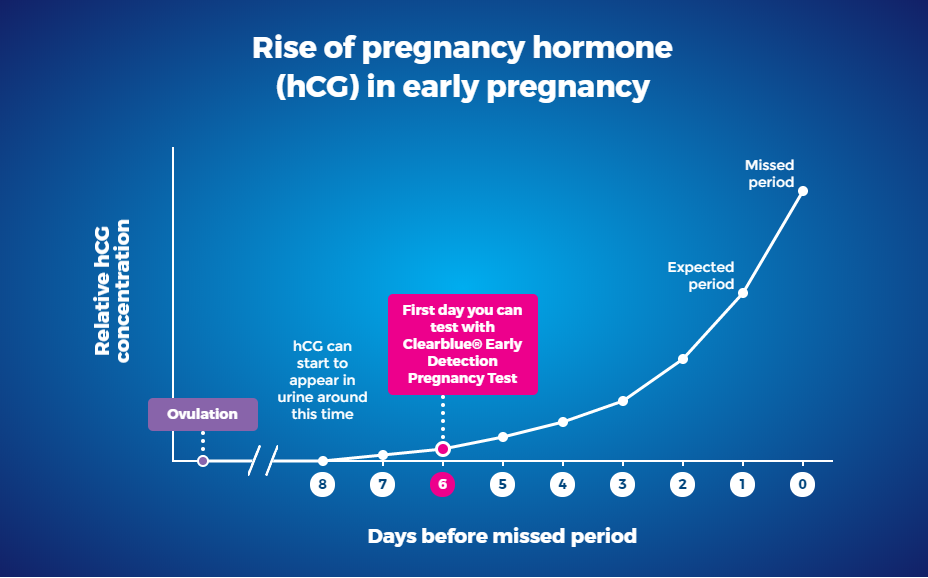
Earliest Pregnancy Detection Possible: A Comprehensive Guide
The advent of pregnancy brings about a whirlwind of emotions, anticipation, and preparation. Knowing when to take a pregnancy test can be crucial for timely prenatal care and informed decision-making. This article delves into the earliest possible detection of pregnancy, exploring the various methods available and their respective accuracies and limitations.
Home Pregnancy Tests (HPTs)
Home pregnancy tests are widely accessible and offer a convenient way to detect pregnancy in the comfort of your own home. They work by detecting the presence of human chorionic gonadotropin (hCG), a hormone produced by the developing placenta after implantation.
- Urine Tests: Urine tests are the most common type of HPT. They typically become positive 10-14 days after ovulation, but some highly sensitive tests can detect hCG as early as 6 days after ovulation.
- Blood Tests: Blood tests are more accurate than urine tests and can detect hCG earlier, usually 6-8 days after ovulation. However, they require a visit to a healthcare provider and may take longer to get results.
Accuracy of Home Pregnancy Tests
The accuracy of HPTs depends on several factors, including:
- Test Sensitivity: The sensitivity of a test refers to its ability to detect low levels of hCG. Highly sensitive tests can detect pregnancy earlier than less sensitive tests.
- Time of Testing: Testing too early may result in a false negative if hCG levels are not yet detectable. Waiting until after the expected period is generally recommended for optimal accuracy.
- Correct Usage: Following the test instructions carefully is essential for accurate results. Errors in sample collection or timing can affect the outcome.
Other Methods of Early Pregnancy Detection
- Transvaginal Ultrasound: This type of ultrasound uses a probe inserted into the vagina to visualize the developing embryo or fetus. It can detect pregnancy as early as 5-6 weeks after the last menstrual period (LMP).
- Serum hCG Levels: A blood test can measure the levels of hCG in the bloodstream. Serial hCG measurements can track the progression of pregnancy and identify potential complications.
- Cervical Mucus Changes: Some women experience changes in cervical mucus consistency and texture around the time of ovulation and implantation. However, this method is less reliable and not recommended as a primary means of pregnancy detection.
Factors Affecting Earliest Detection
The earliest possible detection of pregnancy can vary depending on individual factors, such as:
- Implantation Time: Implantation of the fertilized egg into the uterine lining typically occurs 6-12 days after ovulation.
- hCG Production: The rate of hCG production varies among individuals, affecting the timing of its detection.
- Hormonal Factors: Thyroid disorders or other hormonal imbalances can affect hCG levels and influence the accuracy of early pregnancy tests.
When to Test for Pregnancy
The optimal time to take a pregnancy test depends on the method used:
- Home Pregnancy Tests: Wait until after the expected period for the most accurate results.
- Blood Tests: Can be performed as early as 6-8 days after ovulation.
- Transvaginal Ultrasound: Can detect pregnancy as early as 5-6 weeks after LMP.
Importance of Early Pregnancy Detection
Early pregnancy detection is crucial for several reasons:
- Prenatal Care: Timely prenatal care ensures the health and well-being of both the mother and the developing fetus.
- Informed Decision-Making: Knowing about a pregnancy early on allows for informed decisions regarding family planning, lifestyle changes, and medical interventions.
- Risk Assessment: Early detection can help identify potential risks and complications associated with pregnancy, such as ectopic pregnancy or miscarriage.
Conclusion
The earliest possible detection of pregnancy depends on the method used and individual factors. Home pregnancy tests offer convenience and accessibility, while blood tests and transvaginal ultrasounds provide more accurate and earlier results. Understanding the timing and limitations of these methods is essential for effective pregnancy detection and timely prenatal care.